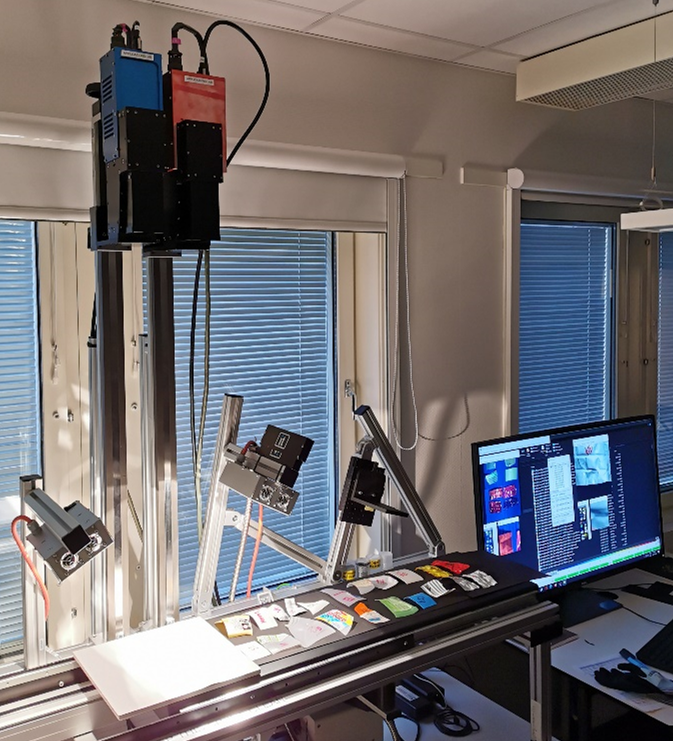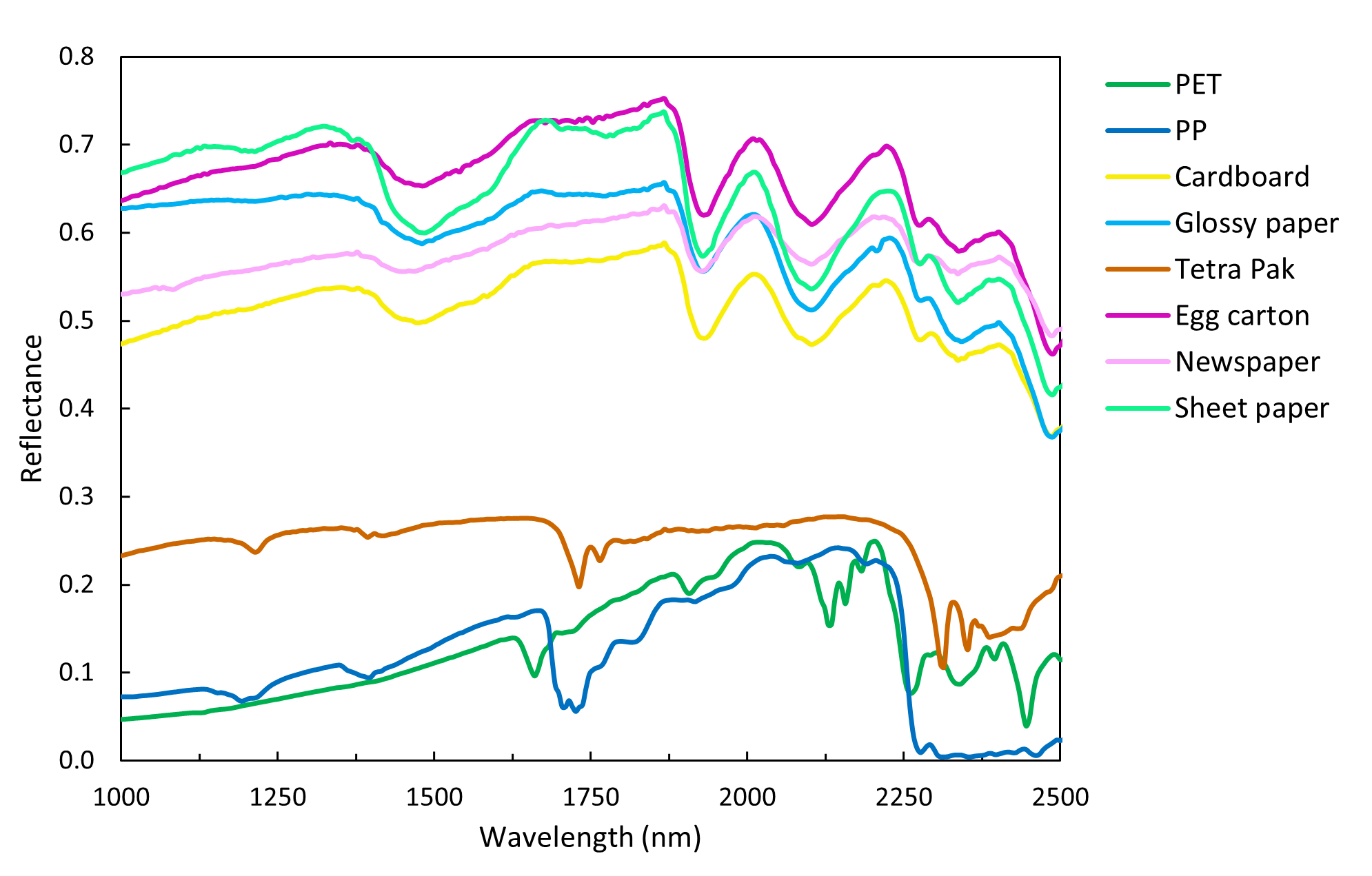Hyperspectral imaging for paper recycling
Sorting of complex paper mixtures waste
Sorting of complex paper mixtures waste
Efficient paper recycling is a growing business and important from an environmental perspective. It helps saving resources like trees, water and plastic, and reduces littering and the area needed for landfills. Compared to plastic, glass or aluminum, paper has a higher recovery- and recycling rate. Thus, the global paper recycling is boosting towards a 56-billion-dollars market by 2025. Nowadays, 74% of paper consumed in Europe is recycled.
For complex waste mixtures, traditional recycling is labor-intensive and slow. Hyperspectral imaging can be used to speed up the recycling process of paper materials by aiding the sorting process. It enables a higher capacity of processing compared to traditional methods. Here, we will demonstrate how we can distinguish between some of the most commonly mixed waste materials (plastics, Tetra Pack®, and diverse papers) using hyperspectral imaging. The samples used for this demo are shown in Figure 1.


Taking the advantages of low background noise, high dynamic range, and superior signal to noise ratio, this state-of the-art camera guarantees high quality of image data and the reliability of the sorting performance.
The resulting spectra are shown in Figure 3. Several of the paper types have very similar spectral features and cannot be separated without high quality instrumentation and advanced data processing. From a recycling point of view, the distinction of the different types is indispensable. Paper waste can be graded according to the type of fiber and compositional quality. For example, corrugated cardboard, one of the most recycled paper products, has the highest value in terms of paper grade. In contrast, newspaper is a low-grade paper. In addition, the fiber length is shortened after each recycling process.
Breeze software, powered by Prediktera, has been used for data analysis. Breeze has a wide range of generic and specific machine learning algorithms, and custom-made models from other machine learning frameworks can also be imported. Here, a Stochastic Dual Coordinate Ascent Maximum Entropy model for classification was built based on representative spectrum of each waste type.

The paper materials were sorted into different grades: corrugated cardboard, office sheet paper, newspaper, glossy paper from magazines, and pulp egg carton. In the meantime, other recyclables, or contaminants such as plastics (PET and PP) and Tetra Pak® were identified to for subsequent removal from the waste stream (Figure 4).
This Hyperspectral Imaging system provides an effective and efficient solution for recycling paper, with the capability to achieve the desired processing speed of up to 2 m/s at full resolution, and higher for specific windowing options. The results of the real-time classification and spatial distribution of the waste materials can be sent to a sorter, enabling a rapid no-contact sorting process.

The combination of a high-quality hyperspectral camera and advanced machine learning algorithms can guide the sorting process and improve the sorting accuracy for a wide variety of waste. A fully automated turnkey solution is available from HySpex and Prediktera to help recycling industries save time and cut expenses.
Download this application note.




Pharmaceuticals



Methane Detection

Plastic Sorting

Mineral mapping in open pit mines

Asbestos

Explosives

Hyperspectral Imaging for Ore Distinction

Hyperspectral Analysis of Powder Mixtures

Paper Recycling

Rare Earth Elements

Coating thickness

Monument Preservation

Cocoa Beans